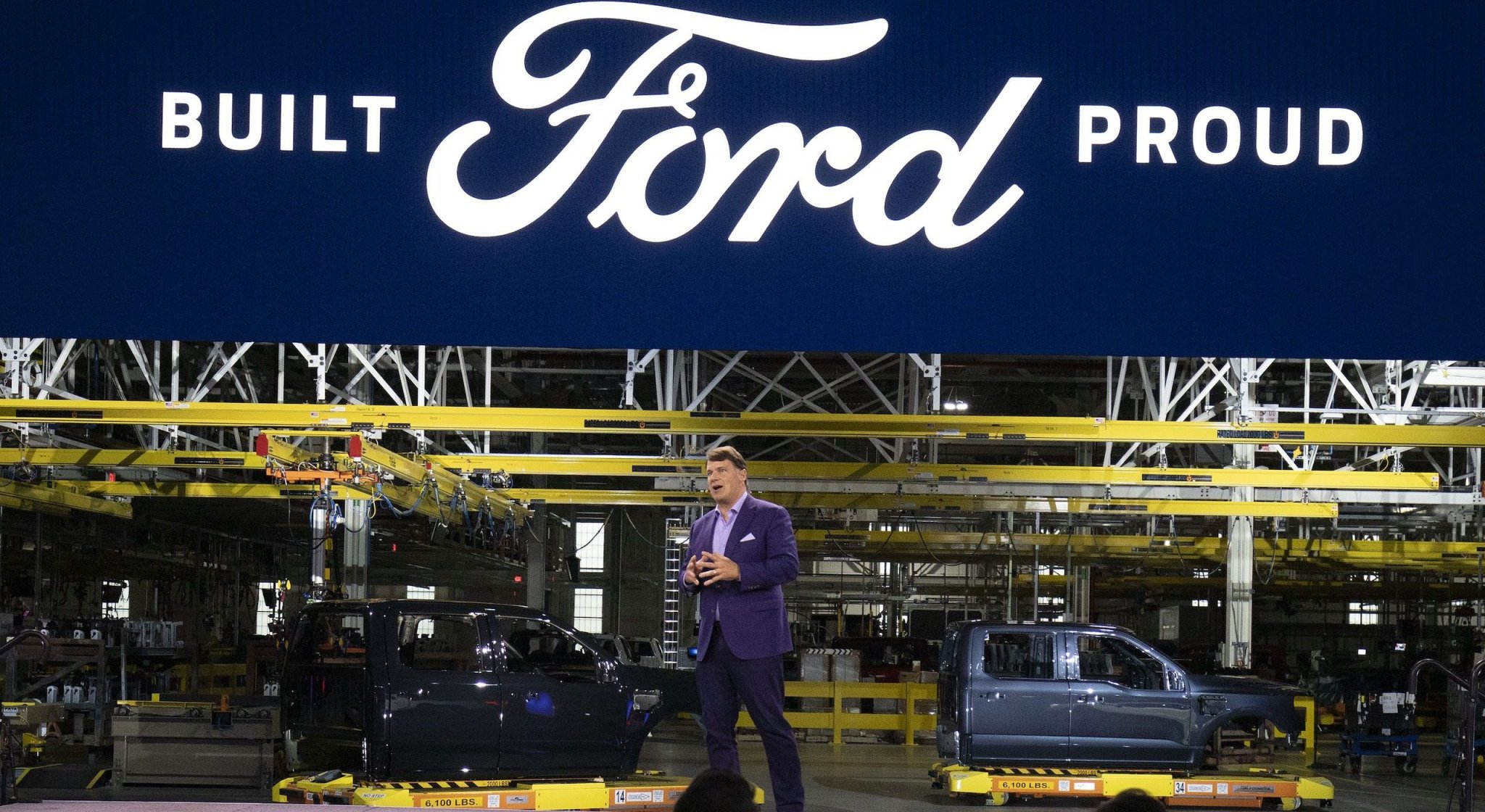

The Big Three from Detroit have historically been unafraid of Chinese automakers to the point of being downright dismissive. But Ford CEO Jim Farley now says that America’s car companies are facing their greatest challenge yet as China’s former automotive underdogs have become Ford, Stellantis, and General Motors’ most formidable foes, due to how far ahead they’ve come on EV production.
Farley tells the Wall Street Journal that Chinese automakers like Changan, Xiamoi, and BYD now pose “an existential threat” to Ford, perhaps not in the U.S. (not yet) but at least in far-off markets and some others that are closer to home. These include Brazil and Mexico, where Chinese combustion-powered cars and EVs account for 20 percent of sales in a market once dominated by U.S., German, and Japanese brands.
But you don’t have to look to Mexico and the slow but sure incursion of brands like BYD and Changan over stalwarts like Toyota and Nissan. Decades ago, a similar thing happened in the U.S., as Japanese OEMs became popular in the ’80s and ’90s and their cars became compelling alternatives to those from Ford, Chevy, and Dodge.
Jim Farley remembers this well and goes on to tell the WSJ that he has “seen this movie before,” using those past lessons to remind his team how Japanese, and, later, Korean automakers got a foothold in the U.S. Of course, Farley would remember that, having started his automotive career in marketing for Toyota where he helped to oversee consecutive growth over two decades prior to joining Ford in the late aughts.



The meteoric rise of Chinese automakers—thanks to their EV production prowess—mirrors the trajectory of the Japanese makers in America decades ago. The WSJ explains that the Chinese have managed to overturn the pecking order with “elegant, low-cost engineering” and by “using a low-cost supply base to undercut the competition on price,” namely the competition from Western automakers whose brand cache is no longer competitive against Chinese brands selling cheaper, well-made cars while “moving at light speed,” as Farley tells Ford CFO John Thornton. And other executives agree, admitting to Farley that Chinese EVs are, indeed, ahead of Ford and other domestic automakers in America.
Ford now finds itself on the back foot in China, where its joint venture partner Changan is cranking out EVs that impressed Farley so much after he went overseas to test them in 2023, that he arranged to have several Changan and other Chinese models brought to Michigan. When the EVs made it stateside, Ford executives met up to see and study the vehicles. Farley told the rest of the brass that “executing to a Chinese standard is going to be the most important priority.”
That might come as a surprise, but even the maker of America’s best-selling vehicle, the F-Series truck, could learn a thing or two about avoiding recalls from Changan. Don’t forget, Changan Ford is the JV partner currently making many of Ford’s luxury vehicles sold in the U.S. as Lincoln models. Ford is nonetheless being cautious with its strategy in China and is attempting to be competitive in the country’s commercial segment first.
Farley sees the move as one that plays to Ford’s strengths, which include the production of trucks, off-road vehicles, and commercial vehicles. Despite its expertise in making trucks, Ford is expecting a loss of $5 billion in 2024 from making EVs like the Ford F-150 Lightning, according to the Wall Street Journal. The answer to that write off, which is tantamount to Ford losing half of its projected operating profit for the year, seems to be something smaller and cheaper to build than a full-size EV pickup or the cancelled Ford Explorer-sized EV.

Farley has been advocating for smaller electric models that can save weight or gain range without the need for big expensive batteries. To that end, Ford has taken a page out of the Chinese playbook and is working on “a low-cost mechanical layout to serve as the foundation for several future EVs,” per the WSJ. That project will reportedly yield an EV midsize truck by 2027, which would appeal to buyers in China and the United States.
But that midsize EV truck won’t see the light of day in Ford’s native market or markets abroad for another three years, at least. Meanwhile, Chinese automaker Maxus, a sister brand to MG owned by SAIC, has debuted the first midsize EV truck with four-wheel drive in the UK. So, the Chinese have already beat Ford to the punch in a major Western market with the MG Maxus eTerron 9, which goes on sale this year for deliveries in 2025, per Autocar. The EV truck is expected to cost over £50,000 before VAT, or around $66,300 at current exchange rates.
The awful name belies the Maxus eTerron 9’s appeal: the Maxus EV midsizer has a range of up to 267 miles; it can tow up to 7,700 pounds; and it combines electric motors riding on each axle to make 429 horsepower. It also has air suspension and can lower its bed for loading cargo. Oh, and it happens to look quite a bit like the latest Ford Ranger, or a bit like the new Maverick.
It’s not like the eTerron 9 will ever depose any truck—let alone the Ranger—in America. High tariffs are keeping Chinese EVs at bay for now, but the WSJ says that Farley still considers them an “immediate threat in Europe and other overseas markets, and a long-term risk in Ford’s profit engine of North America, regardless of protectionist measures.” Whereas global carmakers once hardly saw the Chinese as a threat, they are now gasping to catch up. That’s why Ford is paying more attention to its Chinese partners and rivals, and is no longer taking them for granted.

Got tips? Send ’em to tips@thedrive.com